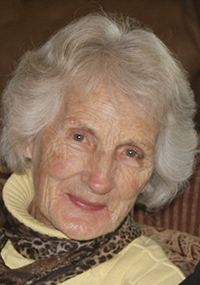

[ad_1]
Mark Gongloff
One of global warming’s more colorful dangers is the possibility that melting permafrost will revive prehistoric diseases and trigger horrific pandemics. But the more immediate candidates for a disastrous, climate-fueled comeback are newer and man-made.
A hotter and more chaotic atmosphere is making it harder to build nuclear weapons and store waste safely in an unhappy union of two of humanity’s biggest headaches. There’s little evidence we’re prepared for what could come next.
We got a stark reminder last week when one of the wildfires scorching the Texas Panhandle came perilously close to the Pantex nuclear-weapons facility just outside of Amarillo. The plant shut down briefly, and workers scrambled to build a wildfire barrier — raising the question of why a nuclear-weapons facility in the parched Texas Panhandle didn’t already have a wildfire barrier.
Pantex builds and breaks down nuclear weapons and stores nuclear material on its 18,000-acre grounds in what is increasingly a tinderbox. Heavier-than-usual rainfall last year made undergrowth flourish in the Panhandle, creating more wildfire fuel. Then a freak winter heat wave fueled by hot, dry winds from Mexico made conditions perfect for the worst wildfires in Texas history.
This cycle — wetter wet seasons followed by hotter, drier dry seasons, leading to roaring wildfires — will become increasingly routine as the planet warms. The wildfire risk for Amarillo over the next 30 years ranges from “severe” to “extreme,” according to the climate-data group First Street Foundation. Such conditions will continue to threaten not only Pantex but nuclear sites around the world.
I am no J. Robert Oppenheimer, but I know enough about nuclear things to understand they do not mix well with fire. When the Rocky Flats Plant, a former nuclear weapons maker just outside of Denver, burned in 1957, it spewed plutonium and other radioactive dust across the city and its suburbs. Every wildfire that comes near nuclear material risks creating another Rocky Flats.
Consider Oppenheimer’s old stomping grounds, Los Alamos National Laboratory, which still builds nukes and stores waste in northern New Mexico. It’s also threatened by wildfires pretty often, most recently in 2000, 2011, and 2022. The 2000 fire burned a quarter of its land, though by some miracle it touched none of the nuclear material. Over the decades, the lab has moved most of its nuclear waste elsewhere and tried to bolster its fire protection. But a Department of Energy audit in 2021 found those steps were inadequate, and there’s still more than enough waste at the facility to cause a serious environmental disaster.
Wildfires have also recently threatened the Idaho National Laboratory near Idaho Falls; the Santa Susana Field Laboratory outside of Los Angeles; and the Chernobyl cautionary tale in Ukraine (in 2020, before Vladimir Putin became its biggest threat). To name a few.
And then there are the many nuclear power plants that are also increasingly threatened by floods, hurricanes, wildfires and droughts. Most U.S. plants are unprepared for such disasters, according to the Nuclear Regulatory Commission, and about 60% of the country’s nuclear power capacity is directly threatened, according to the Army War College. Nuclear power could be a crucial part of a clean-energy transition, but not if it comes with a high risk of multiple Fukushima-like catastrophes.
That’s not all. Global warming could eventually thaw out nuclear waste the US military buried deep in the ice in Greenland, a recent Government Accountability Office report pointed out. That same report warned rising sea levels could disturb and spread radioactive waste in the Marshall Islands, the site of dozens of Cold War bomb tests.
Worryingly, there is little evidence nuclear operations or governments are ready for such potential catastrophes, warns Nickolas Roth, senior director of nuclear materials security at the Nuclear Threat Initiative, a nonprofit group. He points to the COVID-19 pandemic as an example; few sites had planned for an extended crisis that made in-person management difficult. A rapidly changing climate makes such extended, or serial, crises more likely.
“We need to see more nuclear facilities developing resiliency mechanisms,” Roth told me. “Not just because of wildfires. We are entering an era where rapidly evolving risks are impacting nuclear operations.”
The first thing site managers can do is get nuclear waste to safer locations. That’s easier said than done; few places are exactly begging to import nuclear waste. But the time to look for alternatives was yesterday.
Operators can also help one another by freely sharing their experience and expertise, as Roth says happened during the pandemic. And they shouldn’t be left to fend for themselves. Some outfits are run by the US government, but many others aren’t. All will need broad logistical and financial support to avoid disasters whose effects will reach across society.
Places like the Texas Panhandle face obvious climate risks, but we’re learning all the time there are no real safe havens when the atmosphere goes haywire. Everyone working with materials that could spoil the environment and human health for generations must get ready for the risks to come.
Mark Gongloff is a Bloomberg Opinion editor and columnist covering climate change. He previously worked for Fortune.com, the Huffington Post and The Wall Street Journal.
[ad_2]
Source link
24World Media does not take any responsibility of the information you see on this page. The content this page contains is from independent third-party content provider. If you have any concerns regarding the content, please free to write us here: contact@24worldmedia.com

Large part of Lynn Woods remains closed

Swampscott water tests lead-free – Itemlive

Mother needs help providing the Christmas experience

A cheerful fundraiser for Saugus team

Carl Daniel Reiter – The Suffolk Times

Joan Ann (Woessner) Polywoda – The Suffolk Times

Thomas L. Lewick – The Suffolk Times

Jeanette Howard – The Suffolk Times

Nina Mazzaferro – The Suffolk Times

Lynn mayor announces re-election bid

BARRETT: They ate plenty – Itemlive

Brooke Moloney, the Minutewoman – Itemlive